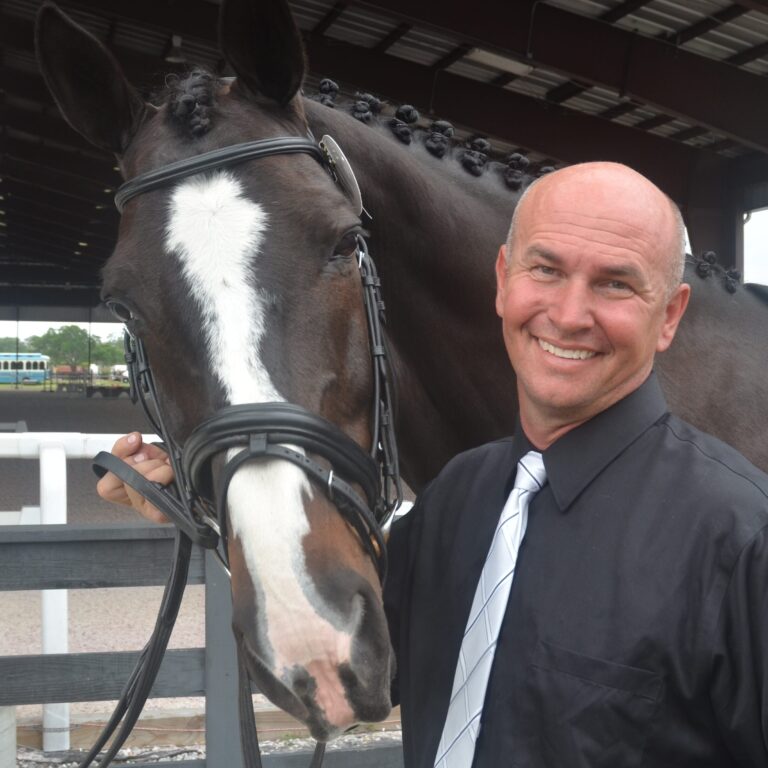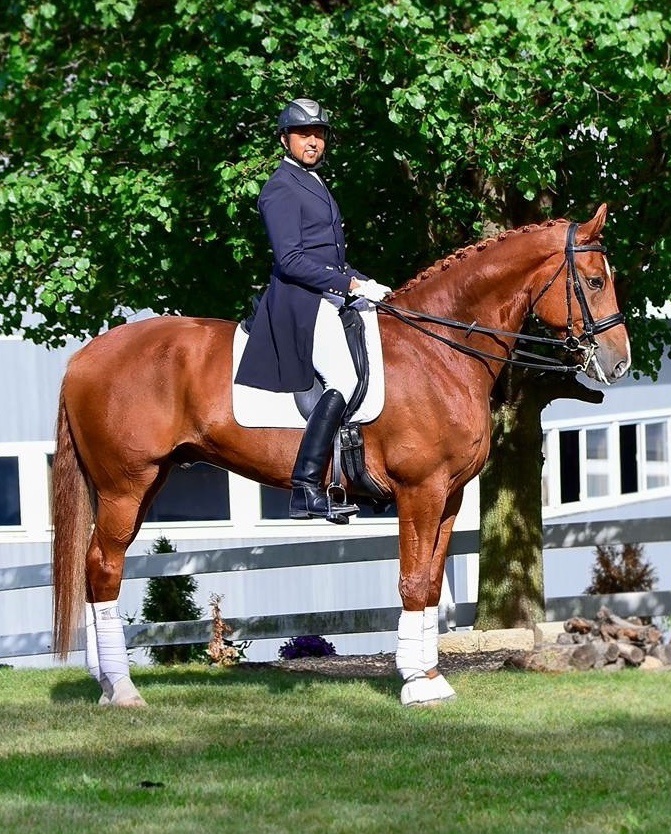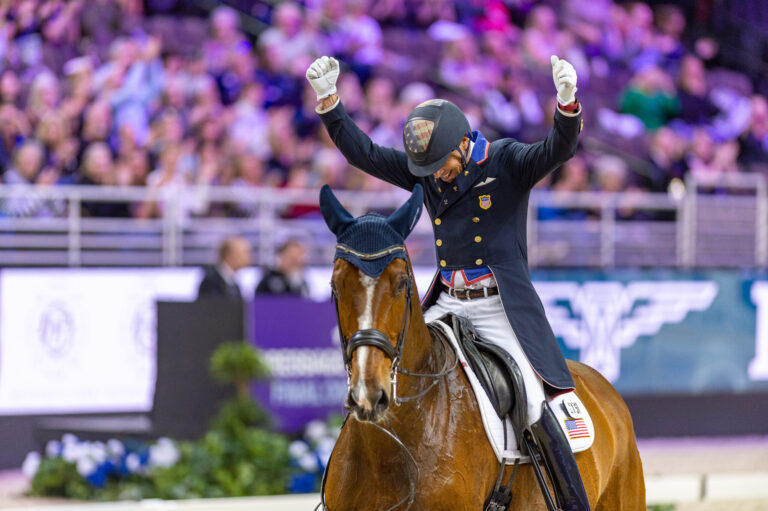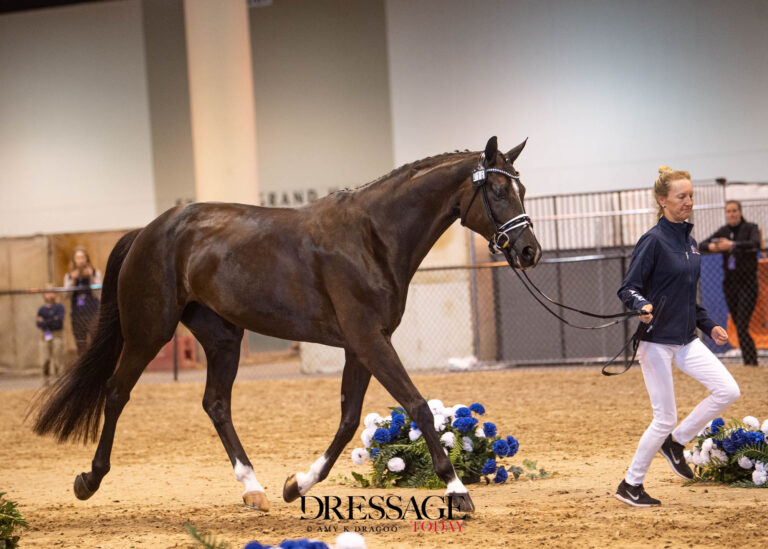This morning at 7:05 when I pulled in the barn driveway, the brave individual working for me during the Florida season was patiently waiting for the horses to finish their breakfast.
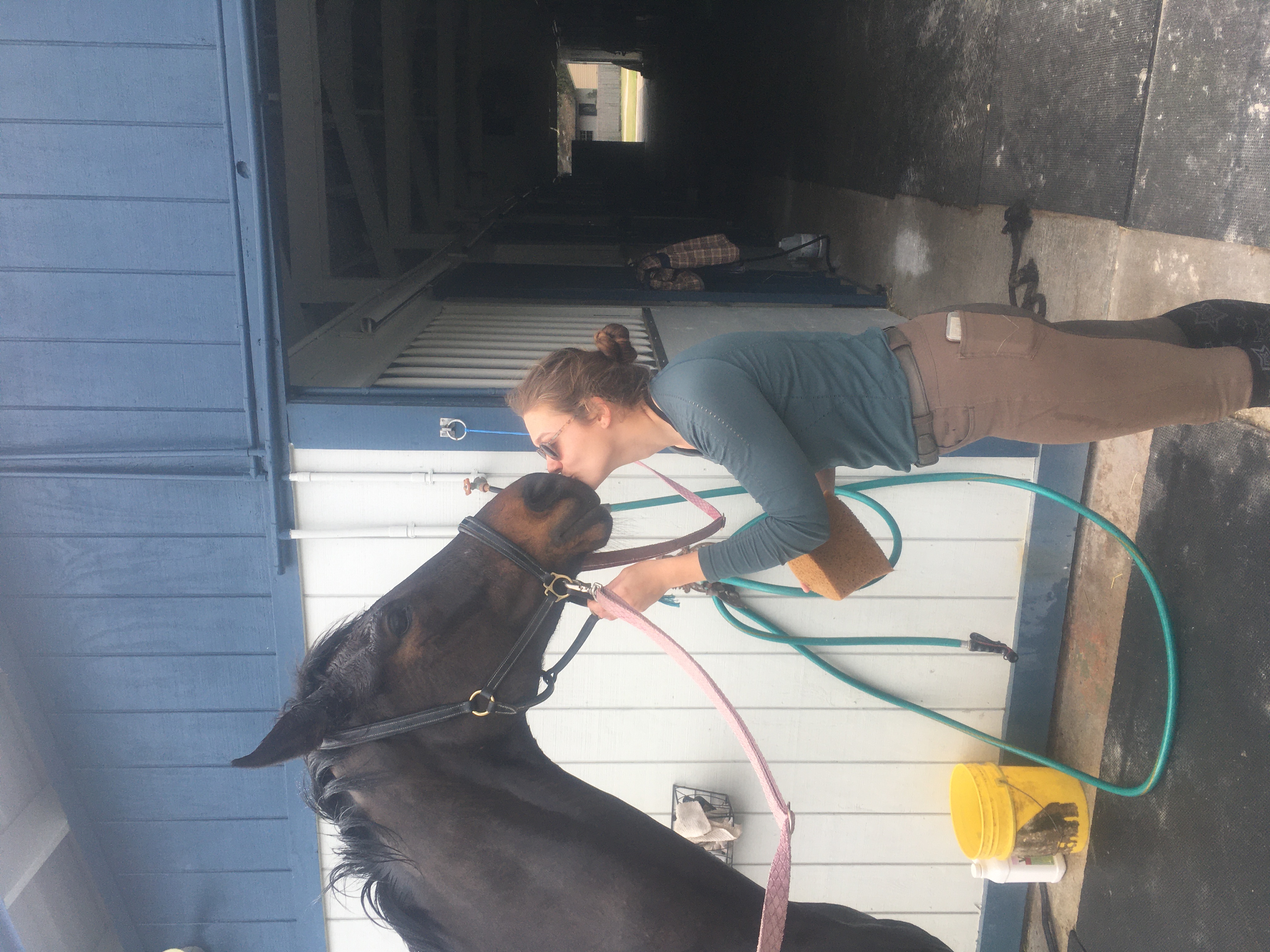
As an Amazon Associate, Dressage Today may earn an affiliate commission when you buy through links on our site. Products links are selected by Dressage Today editors.
Her day ended just after 5 when she patiently distracted a young horse with cellulitis while I administered medication. I wish I could say every day ends by 5, but that would be a terrible lie. We split night-check duty, but on the nights she is responsible for that chore, she leaves the barn for the last time around 9 pm. She is my divas’ cheerleader and chief servant, the voice of encouragement for each horse as they are groomed and tacked, and the kind hands that bathe, provide treats and ice legs at the end of each ride. She is also a goddess of stall cleaning, fierce in maintaining aisle cleanliness, a master of every kind of technology I cannot manage, and extremely interesting to talk to about current affairs, films and books. And she finds my dogs—who some benighted individuals have claimed to be tiresome—charming. Let me speak now in praise of the working student: an often overlooked, frequently bemoaned individual who can make or break a season.
What would cause any sane person to leave her life and partner at home and travel with her trainer all the way down the east coast to spend three months working her behind to the bone in exchange for board and training? For the two young women who have worked for me most recently, a true desire to improve their riding drove them to take this drastic step. I believe they share that with the vast majority of working students currently struggling through the early mornings and late nights of the Florida season.
Not everyone who takes these positions has the desire to become a trainer, and it seems increasingly important to me that we carefully consider what our working students hope to gain from these positions. If the student you have wants to improve her riding skills by gaining mileage on trained horses, spending most of her time clinging on to green babies is not actually meeting her needs. And if your student brought her horse with the specific goal of moving up a level, then that needs to be the focus of her riding time. If you cannot provide what the working student needs—even if you think she should be pursuing different goals—she might be better off working for another trainer. Teaching is challenging, motivating, and well worth the time we invest in it, but to be most effective, I believe it needs to be tailored to students’ abilities and aspirations. The working student position is uniquely designed to deliver exactly that: an independent study designed between a professional and student to make use of the pro’s specialties to strengthen the student’s skill set while providing the pro with much needed barn help. Note: I did not just come up with this model. It was the one I imagined when I left university for a working student job in 1998.
A few things motivated me when I became a working student. The first was a true desire to learn coupled with a marked lack of funds. I graduated from university while I was still eligible for the North American Junior and Young Rider Championships (now the North American Youth Championships) and had a strong likelihood of making the Region 8 team for a second year, but funds were low. If I traded labor for training, I could get my foot in the door with an Olympic rider who would otherwise be outside of my budget. I was also motivated to learn from someone so accomplished; I could think of no better way to learn this business than from an experienced, highly accomplished professional. I was coming from a truly excellent academic experience at Cornell where two professors shaped my intellectual trajectory in ways that continue to influence me today. When I saw the opportunity to shape my dressage career the same way, I was hooked. It seemed an ideal way to learn the reality of the horse business and whether or not I was truly meant to pursue it. I learned the latter quickly: My decision to go pro went hand in hand with accepting an excellent research position and applying to doctoral programs. There are parts of the horse business that bore me to tears, and I am lucky enough to adore academia. I also have a weakness for health insurance, which did not become publicly available in an even remotely affordable way until I was well into my 30s, so a second career seemed an enlightened approach.
We trainers do not, as a rule, treat working students well, and in doing so, we join a long, unsavory history of masters abusing apprentices. During the rise of the guilds, those organizations that empowered craftsmen and artisans in the Renaissance and made them powerful players through the Enlightenment, apprenticeships played a crucial role in defining power relationships in the emerging professions, standardizing approaches to education, and evening out geographic distribution of craftspeople. Entering apprenticeships as early as 7 years old, children across Western Europe swept barber shops, stitched tiny, perfect handiwork on linens, held bowls as they filled with blood to correct humoral imbalances, set type in massive printing presses and drank inordinate amounts of beer to stay warm as they settled empty bellies to sleep on their often wretched pallets. Their reward for surviving these conditions was two years as a “journeyman” working in a town far from home before they might return to their town and ask for their original masters’ support to apply for guild membership. For those whose families came from outside the profession, marrying a master’s daughter was a good strategy for inheriting an existing business and guild membership, while business partnerships also flourished between masters and once-apprentices.
The horse industry has not traveled that far from early modern guild structure in the last six centuries, and the rewards we offer our working students are often less appreciable than the financial stability eventual guild membership promised apprentices. We work our students extremely hard, sometimes short change their lessons and are frequently unpleasant and demanding. Some are offered the chance to ride schoolmasters and gain important experience showing at higher levels, while others are given opportunities to develop and compete their own horses. But still others are left at home cleaning stalls with very little to show for their labors and perhaps only the vague understanding that their trainers might not believe them capable of becoming competent professionals. We need to work on this problem: Real apprenticeships should include frank discussions about aspirations and realities that can be as hard on the trainers as the students. Trainers can, of course, be absolutely wrong in their assessment of their working students, but the students cannot seek other positions where they might have a better experience if their bosses never tell them they are in a dead end position.
You might be surprised how frequently trainers discuss our working students, whining about their faults as often as we air concerns about their futures. We consistently hope to provide better opportunities for education and competition, and we certainly want to give the best possible foundations for horsemanship. But we know that the cornerstones of those foundations are clean stalls, scrubbed water buckets, immaculate horses and shiny tack, so we become frustrated when those corners are cut in favor of our students’ riding ambitions. I have no answers for how to improve the master/apprentice relationship as it manifests in barns across America. Much has already been written about the poor circumstances faced by barn workers and the often egregious violations of employment law that occur across the country. I can only hope to do right by my students: I make sure to tell them I am grateful for their time, I do not shortchange their lessons, I take their goals seriously and I care for their horses like my own. I know this is not enough to compensate for their long days. But I remind myself that no matter how long, difficult, dirty and unpleasant any given day might have been, at least their apartment has climate control. We have come that far since 1500.
Click here to read more articles with Allison Kavey.
Allison Kavey is a dressage rider and trainer who most enjoys “interesting” horses and bringing babies along from breaking through FEI. She is based at Rivendell Dressage in Millbrook, New York. She is also a regular participant in the quadrilles featured in the Challenge of the Americas, in which dressage flirts with circus to raise funds for breast cancer research, in Wellington, Florida. She is a historian of science and professor at CUNY John Jay College and CUNY Graduate Center.


